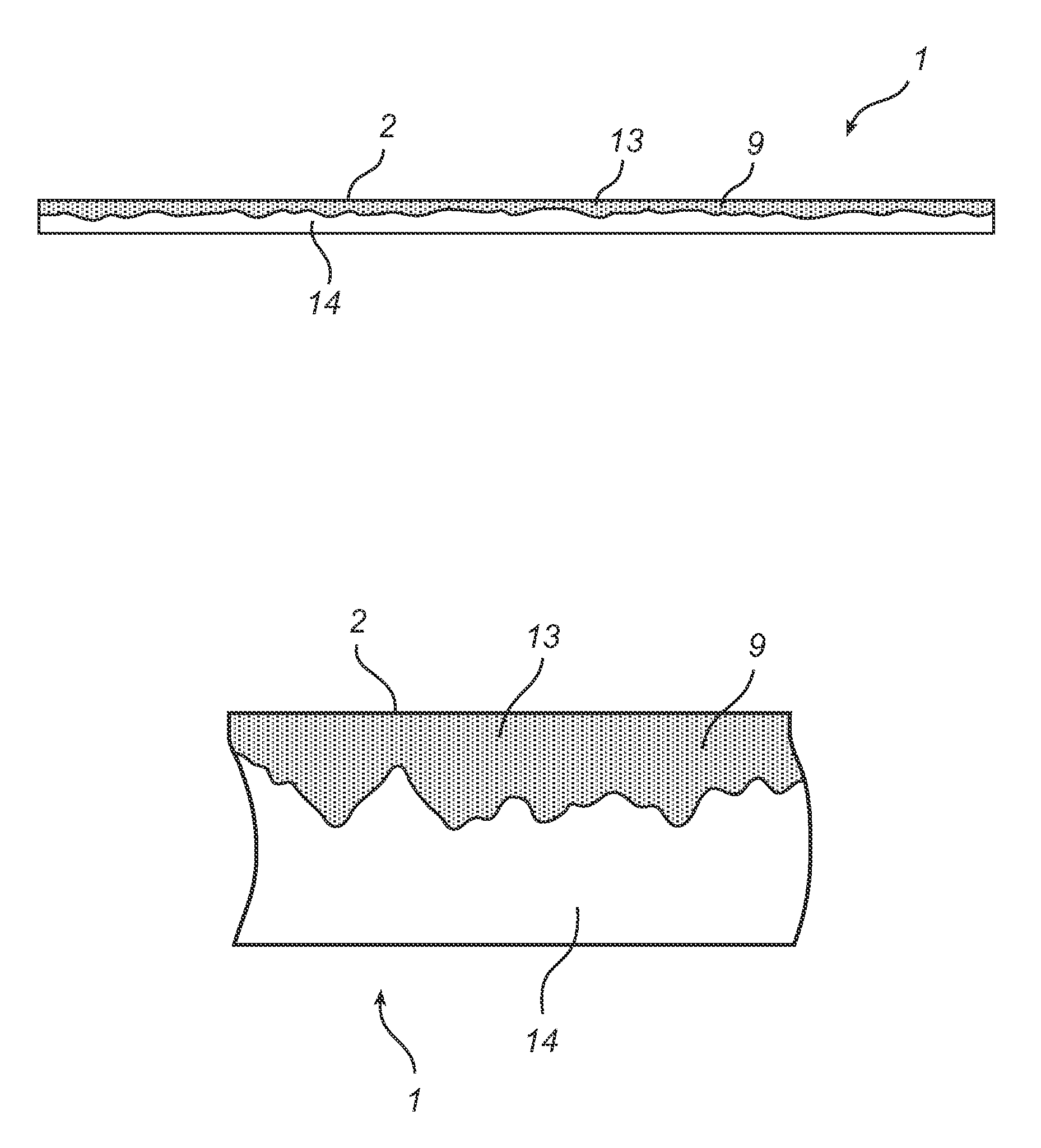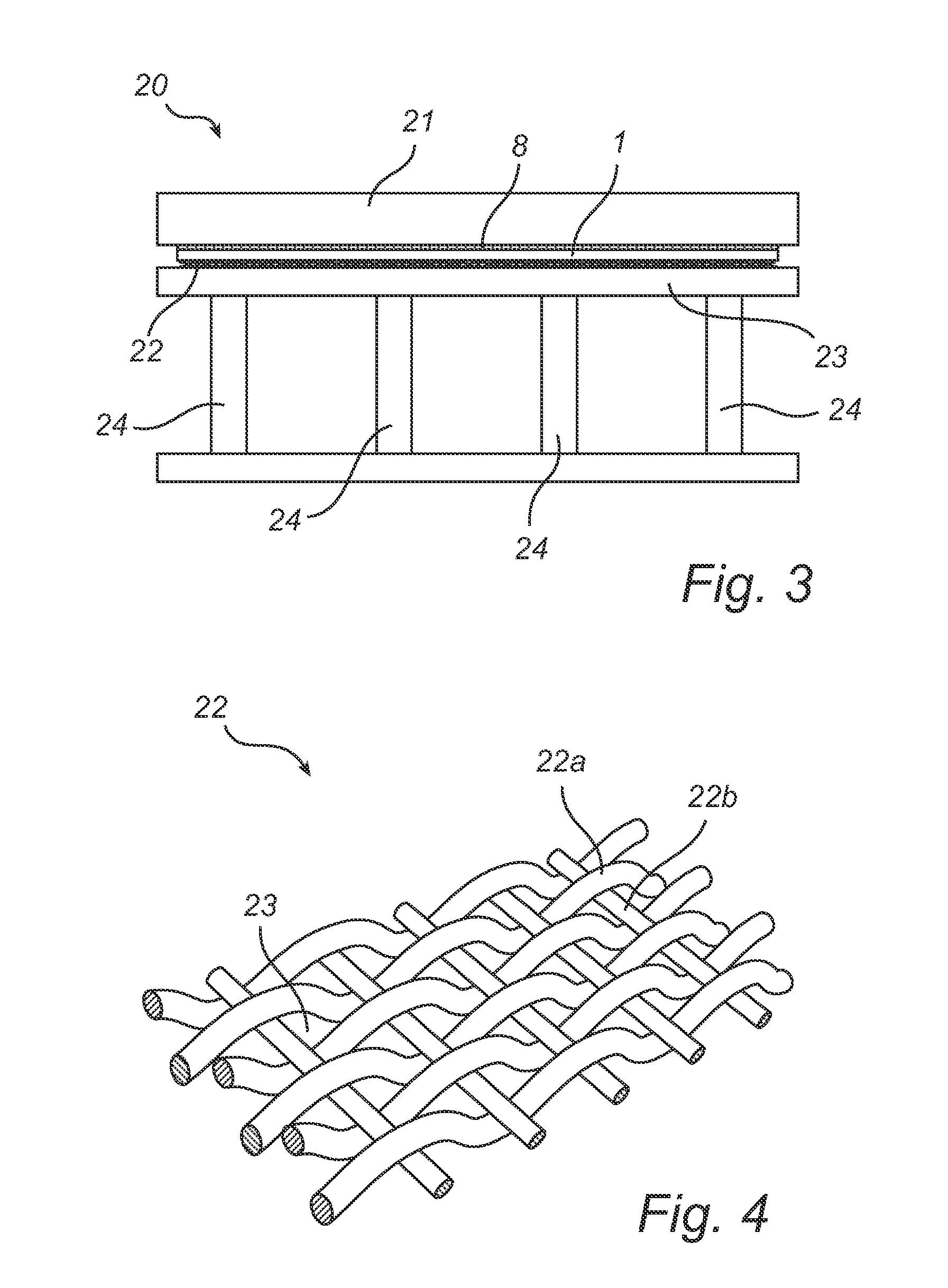Method for treatment of a board and a board element
a technology which is applied in the field of treatment of a board and a treatment method, can solve the problems of decorative grooves causing problems, hdf boards which are currently produced with current demands for fast and rational manufacture do not however meet the demands, and the consumption of varnish and/or paint per unit area of the board is reduced. , the effect of reducing the consumption of varnish and/or pain
- Summary
- Abstract
- Description
- Claims
- Application Information
AI Technical Summary
Benefits of technology
Problems solved by technology
Method used
Image
Examples
examples
[0082]According to one example, 200 g of a composition containing 40% binder and 60% water is added to an HDF board. The binder is phenol formaldehyde and the phenol formaldehyde concentration corresponds to 80 g phenol formaldehyde. The HDF board has an original density of 970 kg / m3 and the main face of the HDF board is 1 m2 in size. The thickness of the HDF board is 4 mm. The composition containing 80 g phenol formaldehyde is applied to the main face of the HDF board and pressed into the HDF board by means of an application of mechanical pressure of 30 MPa for three minutes in the above-described manner. After this treatment, the HDF board acquires a density of 1050 kg / m3.
[0083]The following examples illustrate how the swelling of an HDF board diminishes after treatment in accordance with the inventive method, due to the improved water resistance. A conventional HDF board of 4 mm thickness is laid in a water bath in which the water maintains a temperature of 20° C. for 24 hours. A...
PUM
| Property | Measurement | Unit |
|---|---|---|
| thick | aaaaa | aaaaa |
| density | aaaaa | aaaaa |
| density | aaaaa | aaaaa |
Abstract
Description
Claims
Application Information
 Login to View More
Login to View More - R&D
- Intellectual Property
- Life Sciences
- Materials
- Tech Scout
- Unparalleled Data Quality
- Higher Quality Content
- 60% Fewer Hallucinations
Browse by: Latest US Patents, China's latest patents, Technical Efficacy Thesaurus, Application Domain, Technology Topic, Popular Technical Reports.
© 2025 PatSnap. All rights reserved.Legal|Privacy policy|Modern Slavery Act Transparency Statement|Sitemap|About US| Contact US: help@patsnap.com



